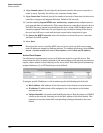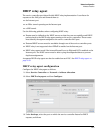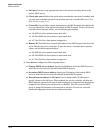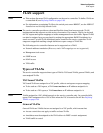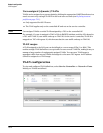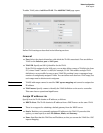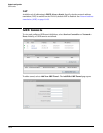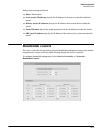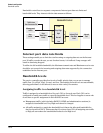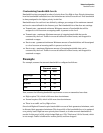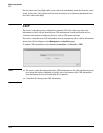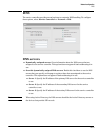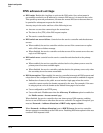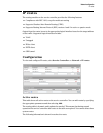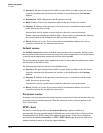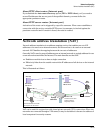
Network configuration
Bandwidth control
Bandwidth control has two separate components: Internet port data rate limits and
bandwidth levels. They interact with the data stream as follows:
Bandwidth Control
Internet Port
Data Rate
Limit
Level
User
Data Rate
Limits
User
traffic
Management
traffic
Internet
Port
Very High
High
Normal
Low
Traffic from
the site access list
Internet port data rate limits
These settings enable you to limit the total incoming or outgoing data rate on the Internet
port. If traffic exceeds the rate you set for short bursts, it is buffered. Long overages will
result in data being dropped.
To utilize the full available bandwidth, the Maximum transmit rate and Maximum receive rate
should be set to match the incoming and outgoing data rates supported by the connection
established on the Internet port.
Bandwidth levels
The service controller provides four levels of traffic priority that you can use to manage
traffic flow: Very High, High, Normal, and Low. The settings for each level are customizable,
allowing performance to be tailored to meet a wide variety of scenarios.
Assigning traffic to a bandwidth level
Traffic is assigned to a bandwidth level for each VSC or for each user. Each VSC can be
configured to handle user traffic at a specific bandwidth level. This level applies to users who
do not have a specific assignment in their RADIUS account.
Management traffic (which includes RADIUS, SNMP, and administrative sessions) is
assigned to bandwidth level Very High and cannot be changed.
All traffic assigned to a particular bandwidth level shares the allocated bandwidth for
that level across all VSCs. This means that if you have three VSCs all assigning user traffic
to High, all users share the bandwidth allocated to the High level.
10-16



